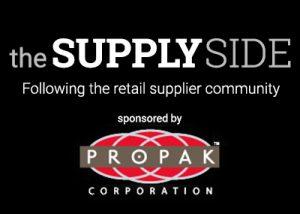The Supply Side: Wal-Mart asks suppliers to further reduce chemical footprint
by October 23, 2017 5:20 pm 772 views

Wal-Mart Stores recently called for a 10% reduction in chemical footprint by 2022 to help meet the retailer’s sustainability goals. That means suppliers of consumable items such as household cleaners, cosmetics, skincare and infant products must reformulate merchandise to remove targeted chemicals.
The Bentonville-based global retailer seeks to strengthen its sustainable chemical policy and work to provide more transparency relating to the chemical composition of consumables sold in its stores. Part of the goal is to offer a larger sustainable product selection for its 140 million weekly U.S. customers.
The 10% chemical reduction over the next five years puts Wal-Mart in elite company as the first retailer in the U.S. to set time and percentage reduction goals. Wal-Mart has defined which chemicals it is targeting for reduction. Following is the revised list.
• Toluene (solvent)
• Dibutyl Phthalate (solvent, plasticizer)
• Diethyl Phthalate (solvent and plasticizer)
• Nonylphenol Ethoxylates (NPEs, surfactant)
• Formaldehyde (bonding agent)
• Butylparaben (preservative)
• Propylparaben (preservative)
• Triclosan (antimicrobial; however, active ingredients that provide therapeutic benefit when present in a product approved by the FDA New Drug Application process are allowed.)
“We know our customers are interested in what goes into products and how they are made. It’s important for them, and we are advocating for them by encouraging innovation and transparency into that process,” said Zach Freeze, Wal-Mart senior director of strategic initiatives for sustainability. “Our strengthened commitment provides more clarity on our expectations for suppliers in working towards enhanced product formulations and setting concrete benchmarks to check progress along the way.”

In September, Wal-Mart became the first retailer to participate in the Chemical Footprint Project survey, and it also publicly reports its progress annually through the retailer’s global responsibility report and its sustainability blog. Wal-Mart said its suppliers have already removed 96% of the high priority chemicals by volume weight from consumable products sold in is stores, up from 95% a year ago.
“Wal-Mart has set an industry precedent for targeting and measuring reductions of chemicals of concern in its products,” said Boma Brown-West, senior manager at the Environmental Defense Fund (EDF). “Wal-Mart demonstrates the five pillars of leadership on safer chemicals and encourages the pursuit of safer products across the supply chain.”
The Environmental Defense Fund five pillars are:
• Institutional Commitment: Goals are aligned and embedded, employees are empowered, and a clear market signal is sent to supplier;
• Supply Chain Transparency: Provides clarity for informed decision-making and risk mitigation as well as timely response to questions and concerns;
• Informed Consumers: Creates consumer trust and brand loyalty;
• Product Design: Establishes a framework for success, accountability, and higher quality products; and
• Public Commitment: Creates stakeholder buy-in, public respect, and opens up partnership opportunities.
The updates to Wal-Mart’s commitment move beyond the company’s measures already in place to promote transparency with clear ingredient labeling and to encourage informed substitution with chemicals of concern by reformulating products customers use in their everyday lives, while maintaining the affordability they expect, according to the EDF.
“Like Walmart, we know that today’s consumers want more information to help them make informed choices,” said Jack McAneny, director of sustainability at Procter & Gamble. “That’s why we’ve recently expanded our transparency commitment to include fragrance ingredients across our product portfolio.”
BACKSTORY, UPDATES
Wal-Mart launched its sustainable chemistry commitment in 2013, and the goal targets 90,000 products from 700 suppliers. Wal-Mart continues to work with suppliers, the Environmental Defense Fund, Environmental Protection Agency and others to achieve the goals and develop its sustainable chemistry commitment and a system for tracking and monitoring the process.
The recent guideline update also involved more transparency from Wal-Mart by requiring suppliers to provide full ingredient disclosure or priority chemicals both online and on product packages starting in 2018. Wal-Mart said it needs cleaning product suppliers to be more transparent with new ingredient information on packaging. The retailer wants customers to simply turn over the product and see the ingredient information, noting that’s what customers expect.
The retailer is also adding two new regulatory lists to its priority chemicals protocol to better address fragrance, allergens ingredients. In addition to the new chemical footprint reduction goal, Wal-Mart will ask suppliers to verify the purity of the ingredients where contaminants are a concern.
Wal-Mart also wants to increase its assortment of sustainably formulated products by encouraging use of two additional third-party verification programs that lend credibility to green chemistry and safer substitutes. They are the Cradle to Cradle (silver level and above) administered by the Cradle to Cradle Institute and the Environmental Working Group’s Safer Choice program.
–––––––––––––––––
Editor’s note: The Supply Side section of Talk Business & Politics focuses on the companies, organizations, issues and individuals engaged in providing products and services to retailers. The Supply Side is managed by Talk Business & Politics and sponsored by Propak Logistics.
